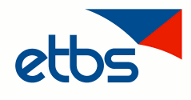A surge in digital transformation
The beginning of this decade has been beset by natural disasters, international conflict and the most wide-reaching disruptor, the COVID-19 pandemic. Both public and private sector organisations worldwide have had to accelerate their digital transformation programs to ensure their customers could conduct business as usual during times of quarantine, lockdown, and restricted travel.
Some examples of this digital transformation are:
- Ways of working – working from home became the norm where possible – more than 40% of Australians worked from home during 2021. We have seen similar, if not higher percentages in the US, the UK and Europe. Secure internal connections between offices and employees as well as connections with external suppliers and service providers and customers were established.
- Digital “contactless” commerce – companies who did not have an established online storefront or digital presence moved quickly to build their online presence. The pandemic created an environment where contactless transactions were essential to continue trading effectively.
- Telehealth – as medical services were pushed to accommodate COVID-19 cases, medical waiting rooms were seen as high-risk transmission sites. Telehealth formed 28% of all federally funded medical consultations in Australia during the pandemic. Similar rates also seen in telehealth use were also recorded in the USA and the UK whilst some European countries experienced over 65% of consultations provided via telehealth during 2021.
- E-Government – Contactless communication with government services became essential during the pandemic. Digital transformation in the public sector was greatly accelerated during the pandemic.
Challenges faced by the IT services sector
On the upside, the IT services market is thriving in terms of revenue, however increased demand along with the effects of the pandemic, international conflict and changes in the global economy have created a very challenging environment for operating a profitable IT services business. Some of the current challenges IT services companies are facing include:
- Availability of staff – according to a recent Australian Bureau of Statistics report, in March 2022 19% of business reported having staff unavailable to work due to COVID-19. The United States has also experienced record levels of absences due to sickness.
- Immigration and travel restrictions – the IT industry has always benefitted from being able to import skills from overseas. Immigration and travel restrictions have greatly dried up the talent pools of the United States, Australia and most countries around the globe, against significantly high demand.
- Increased demand – despite being subjected to climate disasters and a pandemic the economy remains strong and tech skills are in high demand. IT professionals across the board are in short supply and there is strong competition between employers to retain talent. The key implications of this are:
- Increased wages – in the US tech sector wage increases of 10 to 15 percent are not uncommon, with some states reporting increases of up to 30 percent. Australia has also seen similar increases in the bid to retain and attract top talent.
- Increased hiring and onboarding costs – as employees change companies to take advantage of wage increases the levels of investment in hiring to attract new talent and onboarding to bring new employees up to speed has risen significantly. Companies world-wide have reported an increase in onboarding costs of over 100% in the past year to a total of over $23,000 in hiring and onboarding per employee.
- The great resignation – as demand for skilled resources spike, many IT workers have been able to re-evaluate their position. On average only 29 percent of IT workers globally have a high intent of staying in their job, decreasing to around 18 percent for those under 30. The factors affecting this desire to stray are not only wages and inflation but also the call for structural changes to organisations and working arrangements including:
- Remote working – over 18 percent of professional roles in the US are now being offered as fully remote. Tech companies across the globe are seeing a seismic shift to remote working.
- Flexible working hours – with the move to remote work and less time spent commuting and in face-to-face meetings the structure of the work week is changing. In some organisations the four-day work week has become a reality.
- Employee benefits – parental leave, additional annual leave days, fertility benefits, accommodation allowances and even pet adoption leave are all becoming part of the compensation package for some organisations.
- Corporate social responsibility – a recent study indicated over 61 percent of respondents stated that they would change positions if an opportunity to join an organisation with a higher level of social responsibility became available.
- International conflict – Russia’s invasion of the Ukraine in February 2022 has had significant global impacts, including embargos which restrict trade with Russia and Ukraine’s burgeoning IT outsourcing industry. Many organisations have moved their entire company, including their (even local) staff to nearby Poland, the Baltic States and Central-European countries.
- Inflation – inflation rates are increasing globally with the US currently sitting at an inflation rate of 7.9 percent, the highest it has been for 40 years. Australia’s inflation rate is expected to hit 5 percent in 2022. Higher inflation leads to higher operational costs as well as higher wages. It also leads to cash rate increases, meaning mortgage repayments increase, starting a vicious circle.
The above factors have created a perfect storm for the IT industry in terms of sourcing skilled resources and setting prices for services. How organisations prepare for and respond to these challenges is crucial for improving their position in the market.
Summary
Our clients tell us that they are experiencing demands for salary increases in the vicinity of 10% plus, excluding demands for higher salaries for areas of rare skills.
The ‘deadly’ combination of skill shortages, inflation and interest rate increases has, without doubt, an impact on support rates, and we see evidence of this – and we are just in the beginning of this cycle.
Be prepared for change
To quote Greek philosopher Heraclitus “Change is the only constant in life”. This applies more than ever in this decade of disruption. In order to meet the changing IT services landscape head-on, you need to ensure you have made the following preparations:
Understand the market – what services are most in demand? What are the prices? What timeframes are being offered and how effectively are contracts being delivered?
Understand your costs – where are you spending too much? Where can you increase investment?
Benchmark your offering against your competitors – how do your IT services compare to other offerings in the market? What service levels are being offered and at what price? What does the typical statement of work look like for your market? How does the charge out rate and skill levels of your personnel compare to the market?
Enlist ETBS to “watch your space”
ETBS has extensive experience assisting clients to understand and improve their position in the market through the following services:
- Market Price Model (MPM) – the MPM provides a complete breakdown of the components of the statement of work for over 25 IT services. This allows you to understand the components of each service, or more specifically what your competitors offer and how much they charge.
- Rate Card Model (RCM) – the RCM tracks the charge out rates for over 150 IT roles. Using normalised skill levels and job descriptions, we can quickly determine a competitive market rate for any role in your IT organisation.
- Benchmarking and consulting – let ETBS provide an unbiased view of the market and your competitors to assist you in making the right decisions about your IT services.
The road ahead
The 2020s has been a wild ride so far. Economies across the globe have seen massive change brought about by the COVID pandemic, climatic events and international conflict. Being only two years into the decade it begs us to question, what else will we see? Whatever comes ETBS will be ready with up-to-date information and insights on IT services and pricing to ensure you can negotiate a secure future for your business.
LET'S TALK
The team at ETBS would be delighted to assist you in your business improvement journey. To ensure we are the right fit for your needs we offer an obligation free first consultation where we can explore your needs, suggest a course of action and outline costs.


